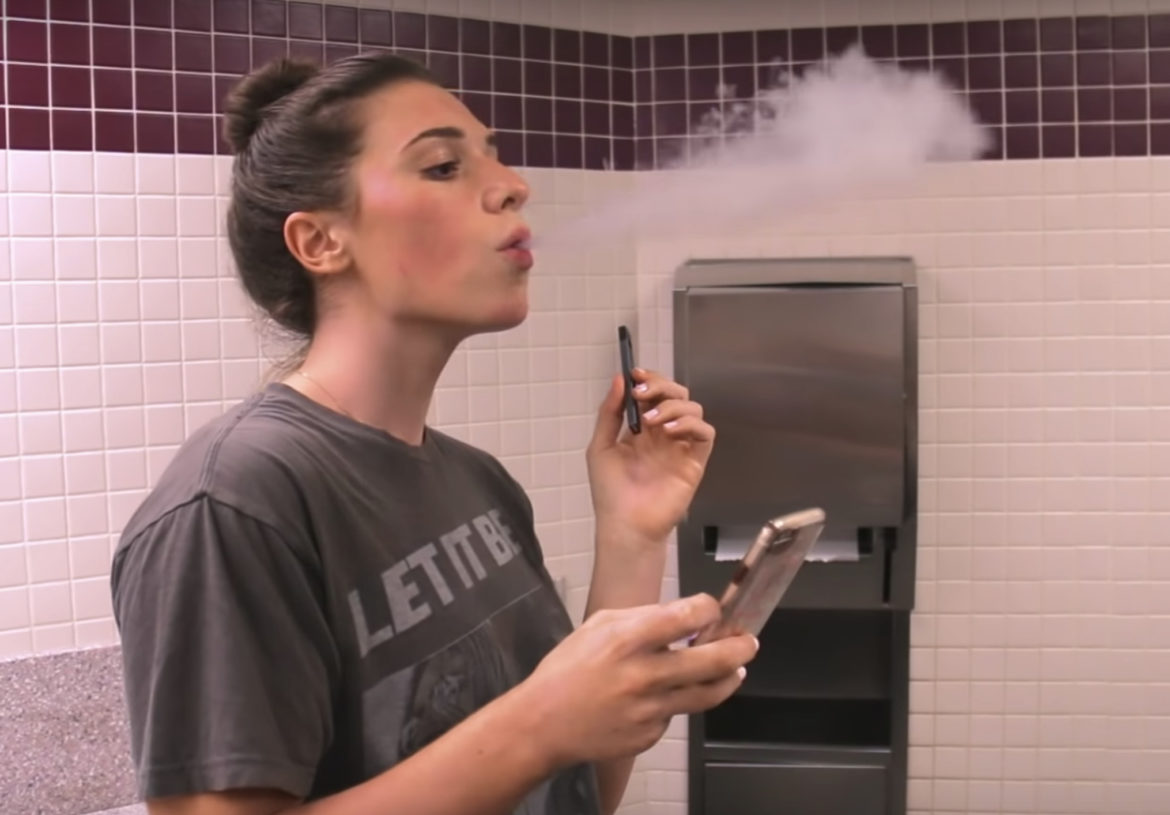In American schools, a hidden epidemic unfolds every three minutes: the student is found to be smoking. The CDC states that more than 40% of high-school students and 20% middle-schoolers have used electronic cigarettes. Public health experts call teenage vaping a crisis. The majority (99 percent) of them contain nicotine, a chemical that is addictive and changes the wiring of brains in developing children and frequently acts as a gateway to smoking cigarettes. Educators, parents, and administrators are increasingly under pressure to make a difference. Vape detectors are an innovative tool quickly becoming an essential tool for schools nationwide. Triton and 3D Sense, among the most prominent vape detectors on campuses are more than sound an alarm.

How Vape Detectors are designed: They work with precision without intrusion
A modern vape smoke detector like the Triton ULTRA Smart Safety Sensor doesn’t rely on cameras or audio recordings ensuring 100% privacy compliance while still delivering actionable intelligence. The device makes use of advanced particulate sensors to study the air in near real time. When vape aerosols, cigarette smoke, marijuana vapor or even masking agents (like heavy perfumes) occur the device will send instant alerts via text or email to a designated team. False positives are very minimal, ensuring that administrators are confident that every notification demands immediate attention.
One unit covers an entire bathroom in the room, locker room, or hallway making deployment economical. Triton users generally mention that vaping incidents have diminished significantly in the five weeks after installation. The reason? Data-driven deterrence. The Triton Cloud Dashboard highlights “hotspots”, where vaping is most frequent and at what time. This allows principals to control hall monitors and security personnel in the areas where they’re required.
Beyond Detection, Occupancy Visibility, and Loitering control
Triton is different from basic vape detectors because of its patent-pending technology for visualising occupancy. The ULTRA sensor doesn’t require images or sound to monitor the time of people’s stay and count in areas that are sensitive. Administrators are able to see colored heatmaps that show how bathrooms have evolved into popular places for socializing and where vaping is common.
Stanford Medicine research emphasizes the dangers. Students who vape are five times more likely than others to develop COVID-19. Vape detectors in schools help improve the quality of air by reducing congregation. They also decrease the risk of spreading airborne pathogens. After the pandemic the devices have become indispensable due to their dual advantages.
Transforming Data into Discipline and Dialogue
Numbers tell an interesting story. The Triton reports module collects qualitative evidence about incident timestamps, places, frequency trends and locations that schools provide to the school board, parent groups and even to students themselves. If a campus exhibits the reduction of 60% in detections after detector rollout the skepticism diminishes. Students are able to see commitment from parents; they accept the consequences.
Educational professionals increase impact by making public announcements about the presence of smoke detectors for vapes starting from the first day. For instance the 3D Sense model is marketed as a deterrent. Guideline materials advise that students be aware of the fact that air surveillance is constantly on. The social cost of triggering an alert is often higher than any talk.
A Multi-Front Strategy Schools Can’t Ignore
Vape detectors can’t stop vaping on their own, but they’re an integral part of a complete solution.
Monitoring – Real-time alerts spot incidents in the moment they occur.
Education – Research-based reports are generating anti-vaping curriculums.
Dissuasion – Signage visible and known consequences shift behaviour.
Discipline – Hotspot data justifies targeted enforcement.
Support – Schools pair the detections and cessation programs to help struggling students.
The CDC says that to stop the trend “buy-in is required from teachers and parents and society.” Vape detectors are the missing piece that provide immediate feedback and can turn good intentions into concrete results.
Deployment It’s Easy
Registering devices takes minutes on the Triton Cloud Dashboard. Administrators can add contacts, modify the rules for notification, and also set alarm thresholds. Plan a demonstration for a chance to see how easy it is to use.
Conclusion
Each puff ignored could mean an entire lifetime of addiction. Every bathroom incident which is not spotted is danger to your safety and health. Vape detectors like 3D Sense and Triton for schools offer more than monitoring. They also provide information, discouragement, and evidence of improvement. The schools that install them do not just react to the issue of vaping; they are able to control the situation.
These tools can transform vague worries into real victories. They can include sensors in each room, occupancy data which are safe for privacy, as well as rapid alert systems. In a time when 40 percent of high schoolers have already experimented and middle-school number are increasing each day, waiting is no longer a viable option. It is your turn to be the first person to discover what the air at your school is saying.